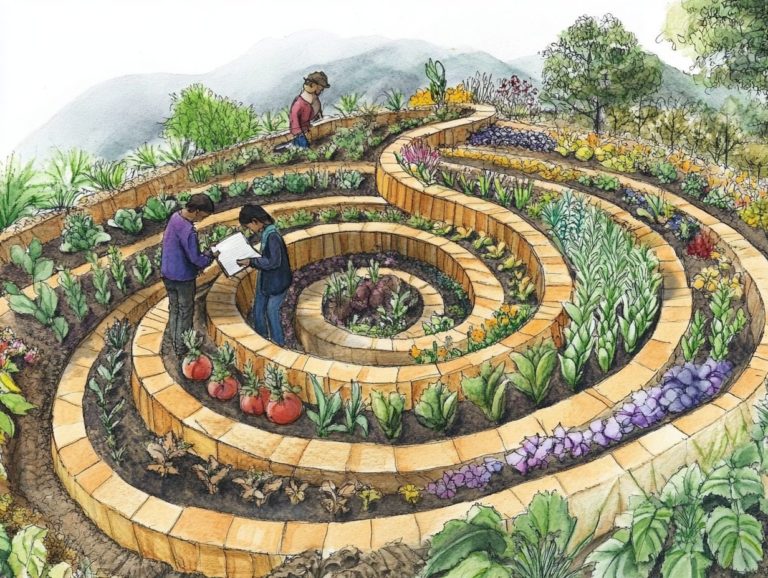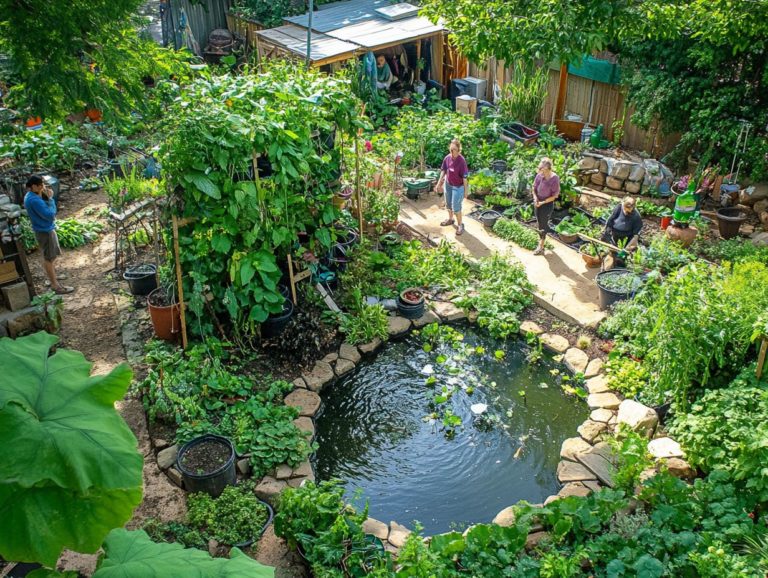The Role of Design in Climate Adaptation
As climate change increasingly influences your everyday life, adapting to its effects has become essential. This article delves into the significance of climate adaptation and underscores how thoughtful design plays a pivotal role in tackling these challenges.
You ll discover innovative approaches and sustainable practices. We highlight successful case studies that showcase the transformative power of design in fostering resilient environments. The journey, however, isn t without its hurdles; we ll also address the challenges and limitations that designers encounter in this vital endeavor.
Join in as we uncover future directions for design in climate adaptation and explore its potential to shape a more sustainable world.
Contents
- Key Takeaways:
- The Importance of Climate Adaptation
- The Role of Design in Climate Adaptation
- Examples of Climate Adaptation Design
- Challenges and Limitations of Design in Climate Adaptation
- Future Directions for Design in Climate Adaptation
- Frequently Asked Questions
- What is the role of design in climate adaptation?
- How does design play a role in mitigating the effects of climate change?
- What is the importance of incorporating design into climate adaptation efforts?
- How can design help communities adapt to the effects of climate change?
- What are some examples of successful design solutions for climate adaptation?
- How can individuals support the role of design in climate adaptation?
Key Takeaways:
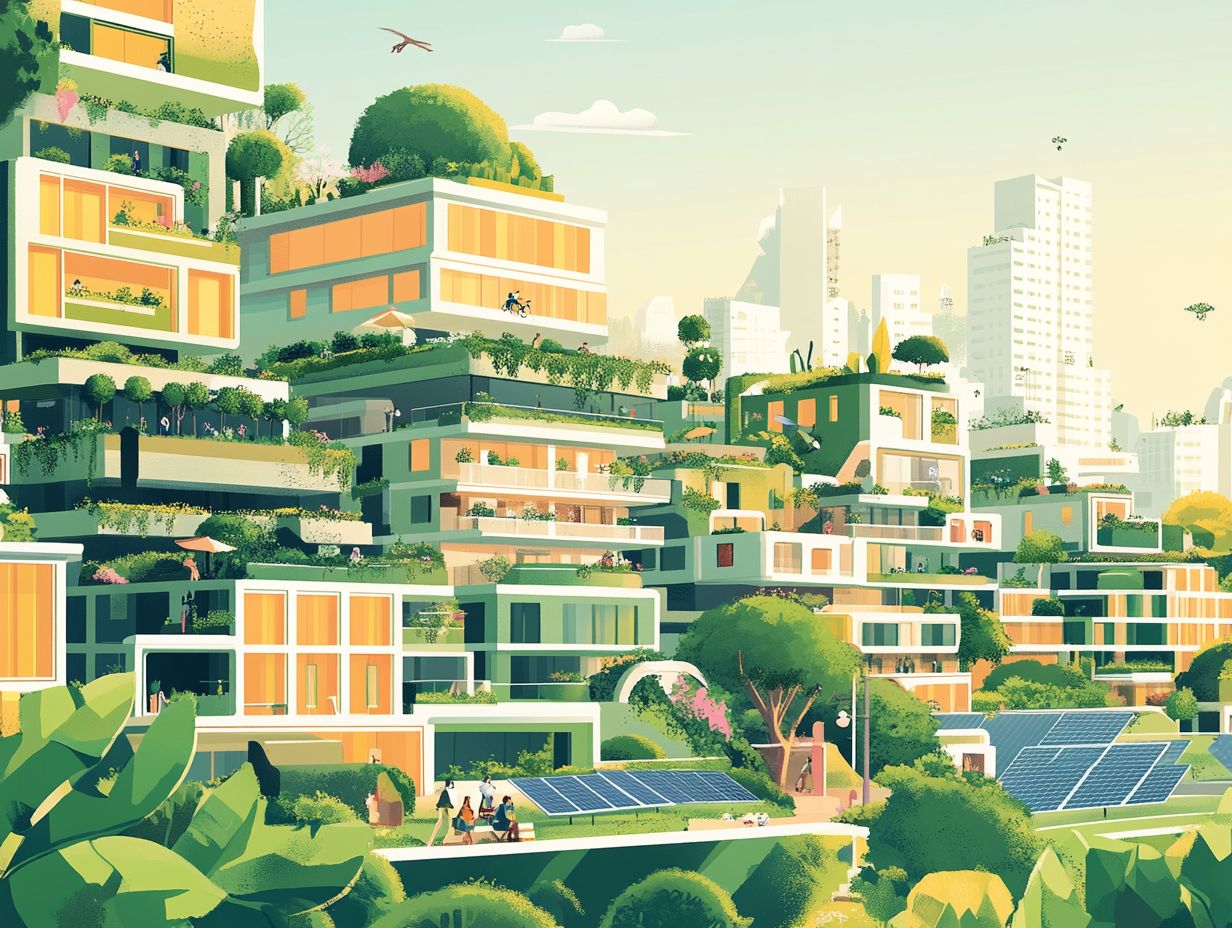
- The need for climate adaptation is crucial in mitigating the effects of climate change.
- Design plays a significant role in climate adaptation by incorporating sustainability and innovative approaches.
- Successful projects demonstrate the effectiveness of design in climate adaptation, but challenges and limitations still exist and require solutions for future progress.
The Importance of Climate Adaptation
Climate adaptation is increasingly viewed as an essential response to the growing climate crisis, which significantly affects the buildings and spaces we live in, human needs, and overall resilience.
As global temperatures continue to rise, the urgency for you and your community to adapt to the impacts of climate change becomes critical, requiring innovative adaptation strategies.
This journey involves understanding sustainability practices and fostering collaboration among stakeholders across various economic sectors to ensure effective community adaptation while minimizing the gases released that contribute to global warming.
Understanding the Need for Adaptation
Understanding the necessity of climate adaptation is crucial as you navigate the challenges posed by increasing ecological footprints and the harsh realities of climate change.
As temperatures soar and extreme weather events become increasingly common, it s imperative for you, as urban planners and local government officials, to confront these vulnerabilities head-on. Rising sea levels pose a significant threat to coastal areas, while droughts and floods disrupt agricultural practices and water supplies.
These shifts not only jeopardize natural ecosystems but also deepen social inequalities, leaving marginalized communities even more exposed to environmental changes. By prioritizing climate adaptation strategies, you can enhance community resilience, integrate sustainable practices, and ultimately forge urban spaces that honor natural resources and promote well-being for all residents.
The Role of Design in Climate Adaptation
Design holds a crucial position in climate adaptation, acting as a conduit between innovative solutions and the urgent challenges presented by climate change. By embracing sustainable architecture, urban design, and eco-friendly practices, you can craft buildings and infrastructures that not only address the realities of current climate conditions but also foresee future impacts.
This proactive approach not only boosts energy efficiency but also builds a resilient future.
How Design Can Help Mitigate Climate Change
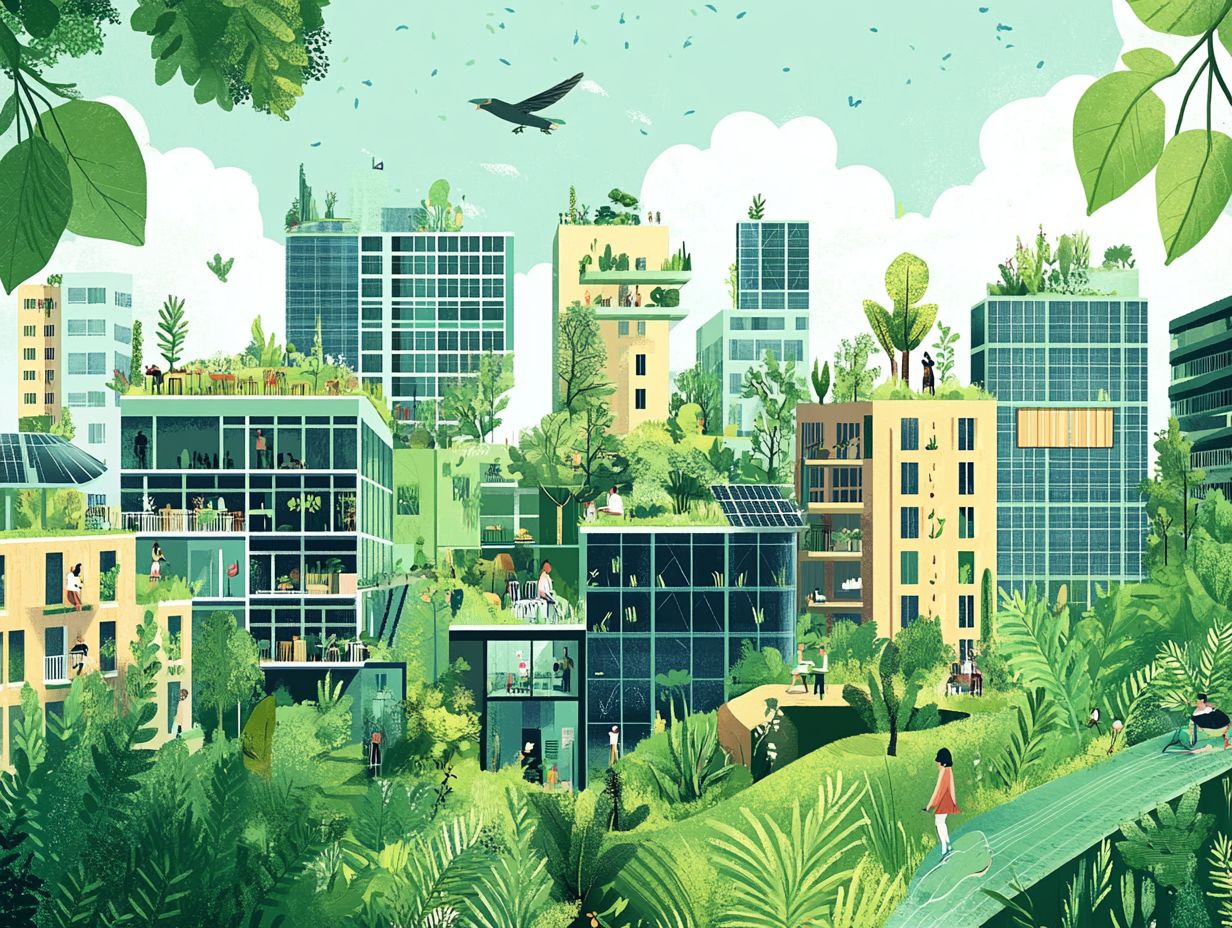
Design offers a remarkable opportunity to significantly combat climate change by weaving energy-efficient technologies and renewable materials into the fabric of the built environment.
When you thoughtfully integrate these elements, you can create structures that not only reduce energy consumption but also lower carbon footprints. For instance, consider the implementation of smart building systems that use sensors to optimize heating, cooling, and lighting; this is a prime example of how technology can elevate energy efficiency to new heights.
By opting for materials like reclaimed wood or bamboo, you not only lessen the demand for new resources but also champion sustainable sourcing practices.
These innovative strategies do more than just support environmentally friendly design; they inspire a transition towards a more sustainable lifestyle, ultimately nurturing a healthier planet for generations to come.
Join us in this journey of exploring and implementing innovative design solutions that help us adapt to climate change!
Incorporating Sustainability in Design
Incorporating sustainability into your design philosophy is essential for crafting resilient and adaptive structures that cater to human needs while minimizing environmental impact. This approach underscores the significance of a circular economy, where resources are effectively reused and recycled, thereby reducing waste.
By embracing green infrastructure, you can develop systems that not only safeguard the environment but also elevate the quality of urban living. The principles of biophilic design which means creating spaces that connect people with nature are particularly vital, as they cultivate a deeper connection between individuals and nature, significantly enhancing overall well-being.
Such designs encourage social interactions and promote healthier lifestyles, resonating with the increasing recognition of the importance of community-oriented spaces that address the diverse needs of society.
Examples of Climate Adaptation Design
Let s dive into inspiring examples from cities like Miami Beach and Amsterdam; they exemplify the crucial impact of creative design strategies in fostering sustainability and resilience against the backdrop of climate change.
Examples of climate adaptation design are prominently displayed through innovative projects across various cities, highlighting how urban design can adeptly tackle climate challenges.
Case Studies of Successful Projects
Several case studies showcase successful projects that elegantly embody the principles of climate adaptation and urban planning while effectively addressing community needs.
Take, for instance, the revitalization of the Crenshaw District in Los Angeles. This initiative has seamlessly integrated green infrastructure, including permeable pavements and rain gardens. Not only do these features manage stormwater, but they also elevate the local aesthetics, transforming the area into a more inviting space.
Community members were actively engaged during the planning phases, ensuring the project aligned with their specific needs and aspirations. By harnessing renewable energy through solar panel installations, the initiative significantly reduces reliance on fossil fuels and lowers greenhouse gas emissions.
These projects highlight the need for innovative design and stakeholder engagement, setting the stage for resilient urban environments capable of withstanding the impacts of climate change.
Challenges and Limitations of Design in Climate Adaptation
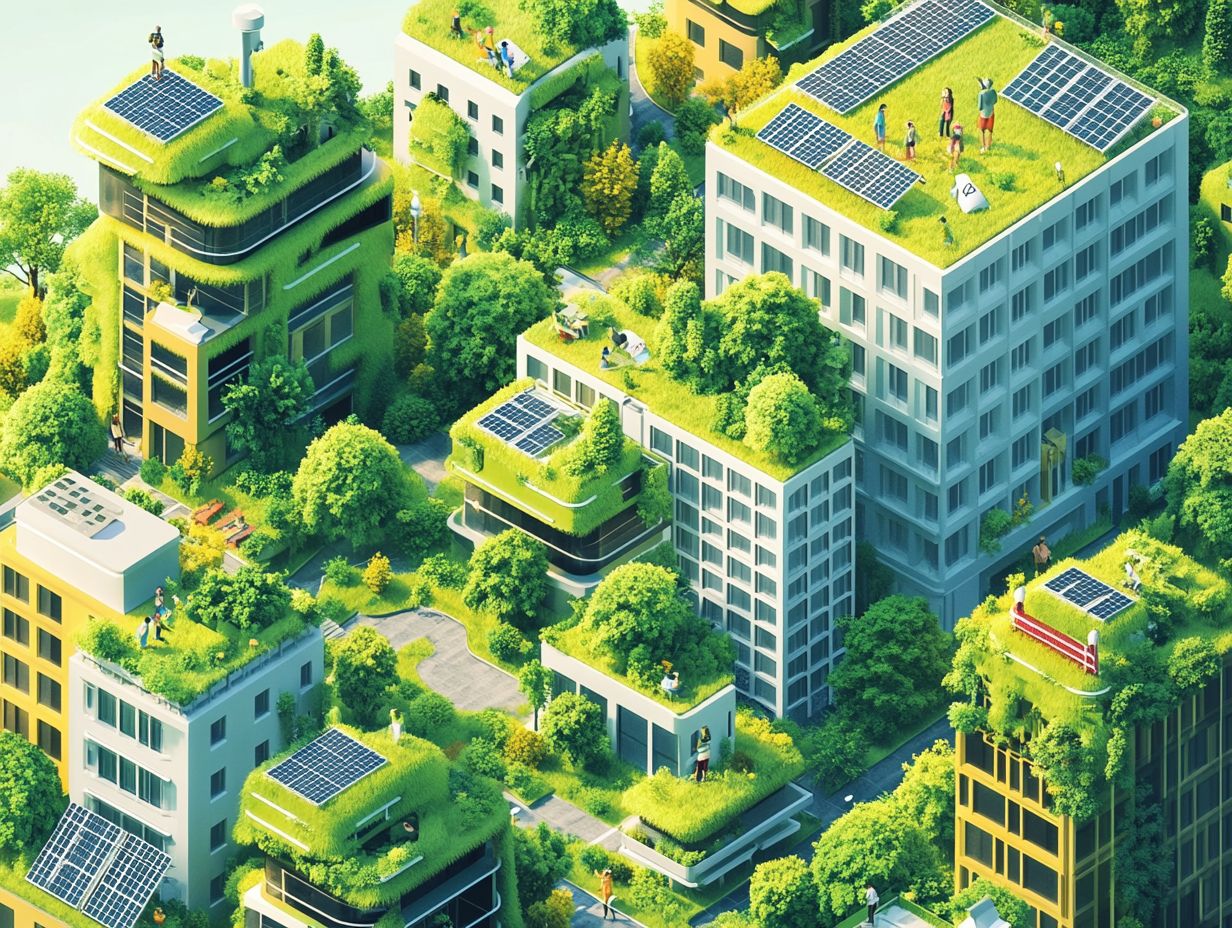
Despite the remarkable potential that design holds for climate adaptation, you may encounter various challenges and limitations that can impede progress. Issues surrounding stakeholder involvement and the quest to reduce carbon emissions can particularly stand in the way of your efforts.
Potential Obstacles and Solutions
Identifying potential obstacles in climate adaptation design enables you to develop effective solutions through collaboration and innovative design principles.
These challenges often arise from factors such as differing stakeholder priorities, budget constraints, and the intricacies of integrating new technologies into existing infrastructure. For example, when coastal communities aim to implement resilient flood management systems, tensions can emerge among local governments, environmental organizations, and residents regarding land use and funding.
To navigate these hurdles, establishing multi-stakeholder workshops can promote open communication and foster a sense of collective ownership of the project. A prime example of this is the collaboration between urban planners and community groups in New Orleans, where their joint efforts led to the creation of green infrastructure that not only mitigates flooding but also enhances community spaces.
Future Directions for Design in Climate Adaptation
The future of climate adaptation design will embrace exciting new strategies that prioritize sustainability and aim for net-zero buildings.
As the climate crisis deepens, you will need to explore new methodologies that seamlessly integrate cutting-edge technologies and sustainable practices into your projects.
Join the movement towards sustainable design today!
Innovative Approaches and Possibilities
Innovative approaches in climate adaptation design shape resilient urban environments.
Eco-conscious designs and passive solar techniques are gaining traction.
These methods prioritize sustainability and enhance community livability by integrating nature-based solutions such as green roofs, urban gardens, and permeable pavements.
By fostering collaboration among urban planners, architects, and community stakeholders, cities can implement strategies to mitigate heat, manage stormwater, and reduce carbon footprints.
Such initiatives contribute to a sense of community pride and ownership, demonstrating the impact of thoughtful urban design on overall quality of life.
As cities face climate challenges, these innovative practices are crucial for a resilient urban future!
Frequently Asked Questions
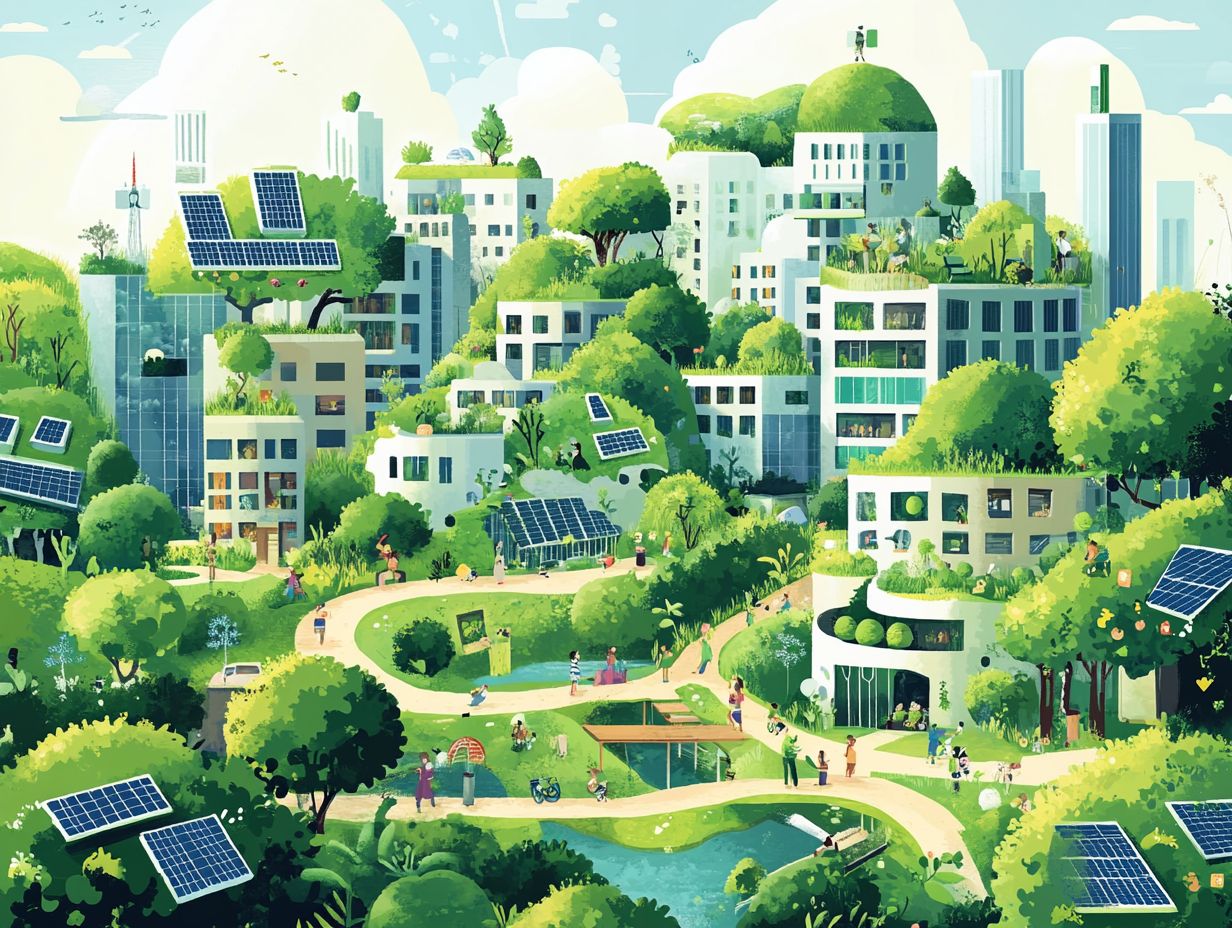
What is the role of design in climate adaptation?
The role of design in climate adaptation is to create solutions and strategies that address the impact of climate change on the environment, society, and economy, including the role of design in urban agriculture.
This involves incorporating sustainable and resilient design principles into projects to mitigate the effects of climate change.
How does design play a role in mitigating the effects of climate change?
Design plays a crucial role in mitigating climate change by providing innovative solutions that reduce greenhouse gas emissions and adapt to changing conditions.
This includes designing energy-efficient buildings, creating green infrastructure, and promoting eco-friendly transportation options.
What is the importance of incorporating design into climate adaptation efforts?
Incorporating sustainable practices into climate adaptation is important for a holistic approach to the impacts of climate change.
Design helps identify vulnerabilities and develop solutions that reduce risks while providing co-benefits such as improved health and well-being for communities.
How can design help communities adapt to the effects of climate change?
Design can help communities adapt by creating resilient infrastructure that withstands extreme weather, implementing green spaces to mitigate heat, and designing transportation systems that promote sustainable travel.
What are some examples of successful design solutions for climate adaptation?
Examples of successful design solutions for climate adaptation include green roofs, rain gardens, permeable pavements, and resilient building designs.
These strategies reduce flooding, heat, and air pollution while providing aesthetic and social benefits for communities.
How can individuals support the role of design in climate adaptation?
Individuals can support design in climate adaptation by advocating for sustainable practices, adopting eco-friendly behaviors, and supporting businesses that prioritize climate adaptation efforts.


